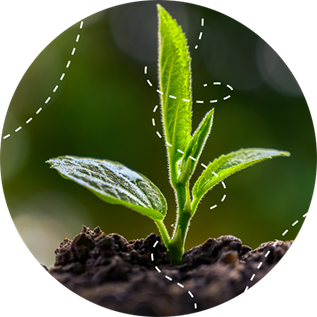Sustainability
Foundations: Plants, Animals, and Our World

Curriculum
provided by EverFi
Module
1: Sustaining Global Resources
Introduction
You will see a symbolic representation of how systems like land, air, water, and
animals are connected. You will see yourself as part of those systems and in a
reciprocal relationship with all the other parts. The topic of global resources is introduced by
exploring renewable and nonrenewable resources. The purpose is to introduce
resources, define renewable/nonrenewable, and put you in the frame of mind to
think about resources as you begin to envision the world you want to live in.
You will complete online learning modules
provided by EverFi in this mini-course.
Lesson
Objectives
After taking this unit,
you will be able to…
·
Describe the natural limits of resources and how those limits
contribute to healthy systems
·
Identify renewable and nonrenewable resources.
·
Describe a product's life cycle.
·
Make creative choices that respect the physical law of limits to
address the impact and cycle of resource usage.
Natural Resources
Natural resources play a big part in systems.
Some natural resources are renewable. That means they can be used and don't run out because
they are created or processed naturally faster than we use them. Nonrenewable resources are the
reverse-they are naturally produced but so slowly that we can use them up
completely before replacing them.
Water
Water is a limited resource
because there will never be more or less of it. The planet has had the same amount
of water for billions of years. Water changes forms, but the amount we all have
to share is always the same. So, what we do with it matters: we need to protect
it.
Water is renewable, so when it is used, like
for farming, it can be cleaned and used again. When water is polluted, we have
less usable water to share. Pollution in water, like chemicals or oil, never
goes away; it just becomes diluted and displaced. So polluted water can be used
again, but only after it is cleaned, which takes time and energy.
Land
The land
is a limited but renewable resource because it can be cleaned and used for many
purposes. The world relies on the soil to produce food, and to produce healthy
food, the soil must be clean and have the right amount of nutrients.
When soil is polluted, it takes time before it
can be used again. For example, if land used for a factory or other industrial
purpose for many years is going to be converted into a farm, it would take time
for the soil to become clean and get the right amount of nutrients to grow
healthy vegetables.
Air
We all need air to live. And we need CLEAN air! Polluted air can cause
conditions like asthma and contribute to strokes, heart disease, and lung
cancer. Air pollution also makes being outside and doing the physical activity
more difficult. And the more greenhouse gases there are in our atmosphere, the
more we see the impact of global warming on all Earth's systems.
Over time, trees and plants help filter out
harmful chemicals, but they can become overloaded and damaged by air pollution
and climate change. The more CO2 there is in the air, the more
trees and plants are needed and the longer it takes them to do their work.
Making sustainable choices that cause less air
pollution help move us toward a more sustainable balance. Our choices can keep
systems from overloading and help us stay within the limits of healthy systems.
Click here to begin
your Online Learning Module: Sustaining
Global Resources.